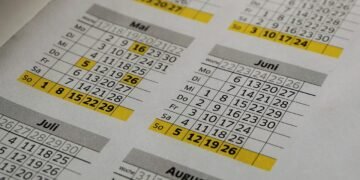Caffeine Culture: The Rise of a Stimulant-Driven Society
In today’s fast-paced world, caffeine has become more than just a beverage ingredient; it’s a lifestyle. From early morning coffee runs to late-night energy drinks, millions rely on caffeine to function, stay productive, and maintain energy levels. But at what cost? The New York Times (NYT) has investigated the phenomenon of “Hiked Up on Caffeine” life—a high-energied, caffeine-drenched lifestyle that pervades contemporary society. Whereas caffeine is vaunted for providing a boost of alertness and performance, the mass consumption raises questions about its implications for health, addiction, and social pressures.
Consider James, for instance. A 32-year-old marketing executive, James begins his day with a double espresso, has an energy drink by lunchtime, and gulps down another coffee in the late afternoon just to stay ahead of deadlines. He convinces himself it’s all part of the hustle, but on sleepless nights when he can’t drift off, he questions whether the caffeine is bossing him around instead of vice versa.
Here, we embark on a critical analysis of NYT’s interpretation of ‘Hiked Up on Caffeine’ – The High-Octane Lifestyle!, examining its advantages, disadvantages, and effect on daily life. We also have a step-by-step plan for how to handle the consumption of caffeine. So, is caffeine our best friend, or have we overindulged in it? Let’s uncover.
Caffeine Addiction and the Hustle Culture
Caffeine use has been a part of human culture for centuries. From ancient tea ceremonies to the development of espresso machines, caffeine has always represented alertness and social interaction. In the past decades, though, its purpose has grown well beyond a morning routine.
Why Are We Addicted to Caffeine?
NYT points out that the contemporary culture of caffeine has been driven by a variety of factors:
Workplace Caffeine Addiction: The 9-to-5 routine (or more) has turned caffeine into a staple for most professionals. From getting through meetings to getting through tight deadlines, coffee has become the de facto fuel of the workforce.
Hustle Culture and Energy Drink Boosting: Social media romanticizes productivity, with entrepreneurs and influencers advocating an “always-on” culture. Consequently, caffeine assists people in getting through extended workdays and sustaining high performance.
Academic Stress and Study Supplements: Students, particularly in high-pressure educational settings, consume caffeine to study for exams, do homework, and remain awake during lectures.
Marketing & Availability of Caffeinated Products: The market for caffeine has changed a lot. Caffeine isn’t only found in coffee anymore—it’s found in sodas, teas, pills, chocolate, skin creams, and even in workout supplements.
Consider Sarah, a college student with coursework, a part-time job, and social obligations. She never realized she had a caffeine habit until she caught herself needing at least three iced lattes just to make it through her day. What was once an occasional boost has become a necessity to keep pace with her hectic schedule.
The Science Behind Caffeine: Effects on the Brain and Body
To appreciate why caffeine is so potent, we have to take a look at how it acts upon the human body. Health experts quoted by NYT say that caffeine is a stimulant that accomplishes its work by blocking the neurotransmitter adenosine, the one that causes us to feel drowsy. As a result, it increases alertness, focus, and mind function.
Advantages and Disadvantages of Caffeine Intake
Increased Alertness and Cognitive Boost: Keeps individuals awake and alert, hence why it’s in high demand among students, business professionals, and shift workers.
Physical Performance Enhancement: Caffeine is found in most pre-workout supplements because it increases endurance and the feeling of less effort.
Mood Elevation and Mental Clarity: Caffeine, according to studies, has been found to have a temporary positive effect on mood and lower depression risk.
Long-Term Health Benefits: Research indicates moderate caffeine consumption may reduce the risk of certain diseases, such as Parkinson’s, Alzheimer’s, and type 2 diabetes.
A Step-by-Step Guide to Responsible Caffeine Consumption
If you’re concerned about your caffeine intake, here’s a practical step-by-step guide to finding a balanced approach:
Step 1: Monitor Your Caffeine Intake
Step 2: Establish a Safe Daily Limit
Step 3: Choose Healthier Caffeine Alternatives
Step 4: Limit Caffeine Late in the Day
With optimized consumption of caffeine and well-informed decisions, its benefits can be utilized with a reduced risk.












































